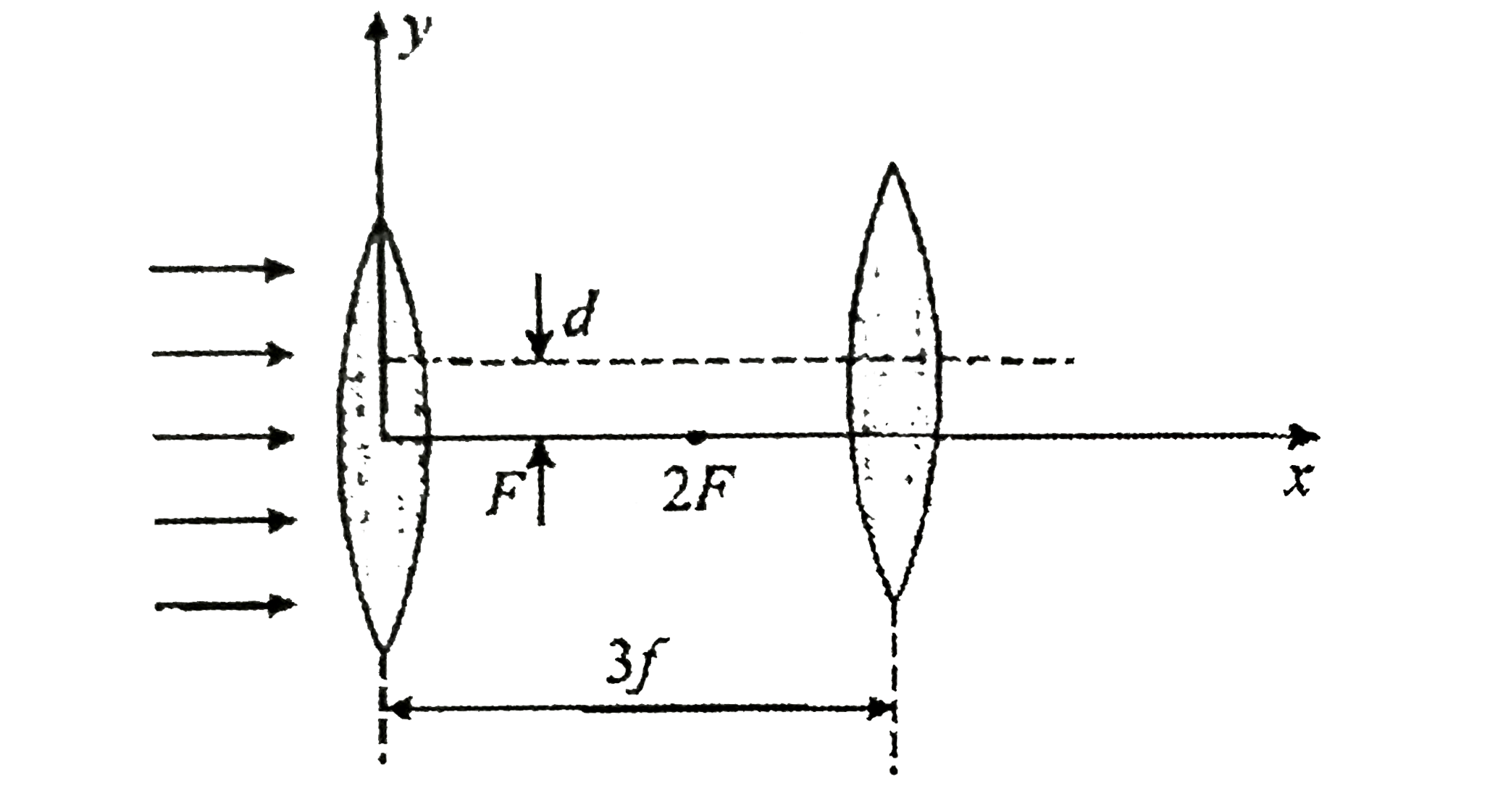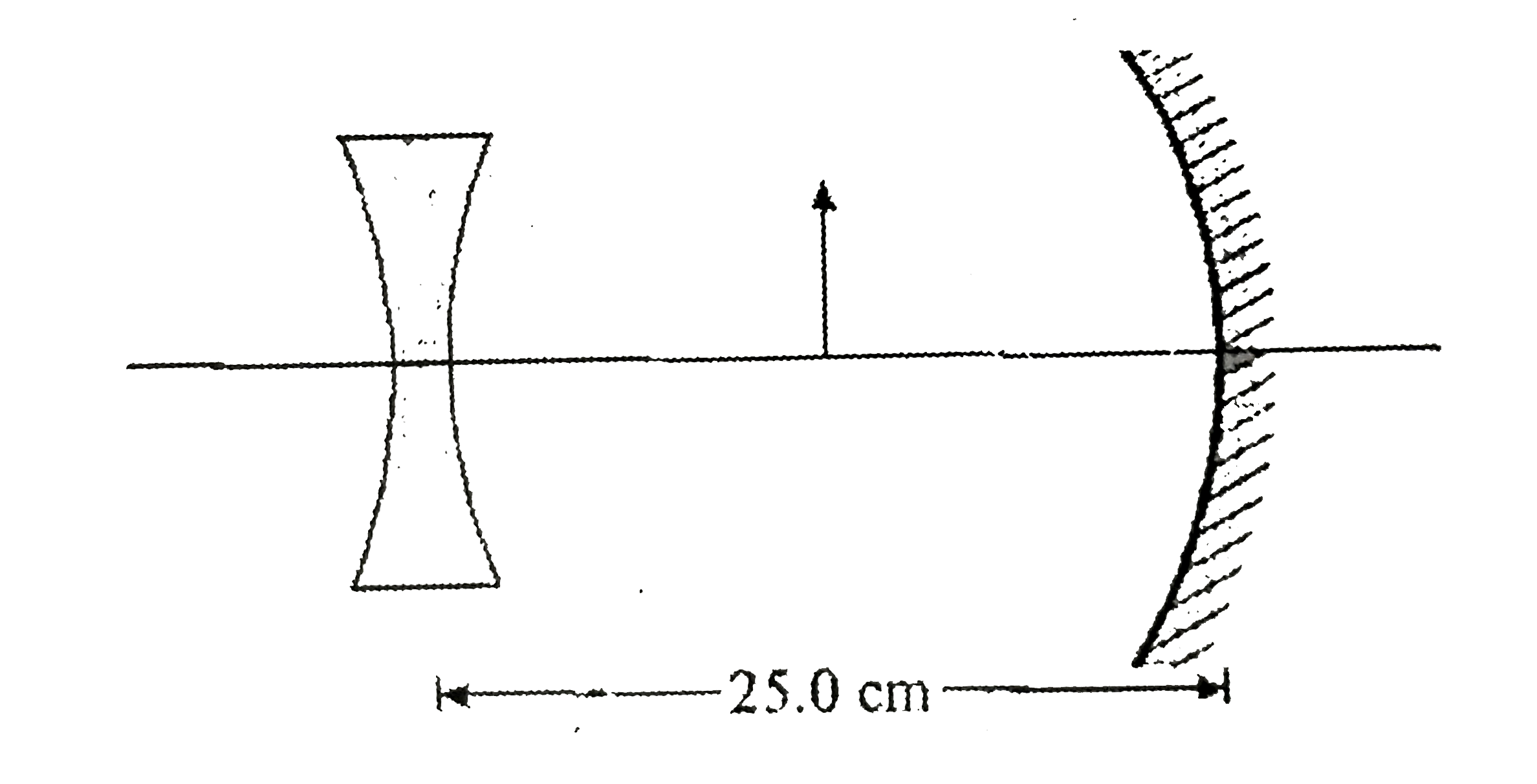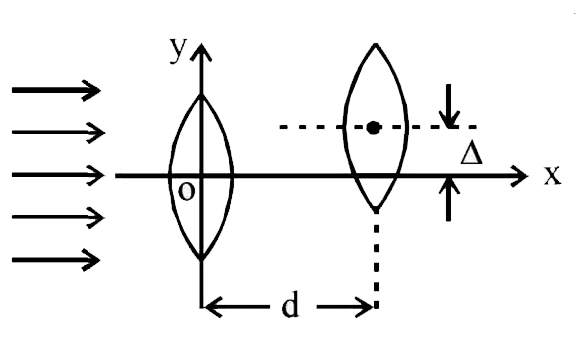Complete Solutions to Practive Exercise 5.6 of chapter GEOMETRICAL OPTICS of Class 12 book with complete answers and questions
| Class 12 | PHYSICS |
| Chapter | GEOMETRICAL OPTICS |
| PHYSICS GALAXY | Practive Exercise 5.6 |
| Number Of Questions | 16 |
| Academic Year | 2023-24 |
A point source of light is kept at a distance of `15cm` from a converging lens,on its optical axis.The focal length of the lens is `10cm` and its diameter is `3cm` ,A screen is placed on the other side of the lens ,perpendicular to the axis of lens,at a distance `20cm` from it.Then find the area of the illuminated part of the screen?
View SolutionA 5.0 diopter lens forms a virtual image which is 4 times the object placed perpendicularly on the principal axis of the lens. Find the distance of the object from the lens.
View SolutionA point object is placed at a distance of 25 cm from a convex lens of focal length 20cm. If a glass slab of thickness t and refractive index 1.5 is inserted between the lens and the object, the image is formed at infinity. The thickness t is
View SolutionA convex lens of focal length 20 cm and a concave lens of focal length 10 cm are placed 10 cm apart with their principal axes coinciding. A beam of light travelling parallel to the principal axis and having a beam diameter 5.0 mm, is incident on the combination. Show that the emergent beam is parallel to the incident one. Find the beam diameter of the emergent beam.
View SolutionA convex lens of focal length 20cm is placed 10cm in front of a convex mirror or radius of curvature 15cm. Where should a point object be placed in front of the lens so that it images on to itself?
View SolutionA converging lens of focal length 20cm is separated 8 cm from a diverging lens of focal length 30 cm. A parallel beam of light falls on converging lens and after passing through diverging lens focussed at point P. Find the location of point P. Repeat the calculation for the case when the parallel beam first falls on diverging lens.
[4.2 cm from convex lens]
View SolutionTwo symmetric double convex lenses A and B have same focal length but the radii of curvature differ so that `R_(A) = 0.9R_(B)`. If refractive index of A is 1.63 find the refractive index of B.
View SolutionAn object is placed at 20 cm left of the convex lens of focal length 10 cm. If a concave mirror of focal length 5 cm is placed at 30 cm to the right of the lens, find the magnification and the nature of the final image. Draw the ray diagram and locate the position of the final image.
[At the object and of same size]
View SolutionIn the figure- it is shown,the focal length f of the two thin convex lenses is the same. They are separated by a horizontal distance 3f and their optical axes are displaced by a vertical separation `'d'(d lt lt f)` as shown. Taking the origin of coordinates O at the centre of the first lens , find the x and y coordinates of the point where aparallel beam of rays coming from the left finally gets focussed ?
((5f, 2d)]

View SolutionA convex lens of focal length 10cm is placed 30 cm in front of a second convex lens also of th esame focal length. A plane mirror is placed after the two lenses. Where should a point object be placed in front of the first lens so that it imagees on to itself?
View SolutionA small pin of size 5 mm is placed along principal axis of a convex lens of focal length 6cm at a distance 11cm from the lens. Find the size of image of pin.
[7.2 mm]
View SolutionAn object is kept at a distance of `16 cm` from a thin lens and the image formed is real. If the object is kept at a distance of `6 cm` from the lens, the image formed is virtual. If the sizes of the images formed are equal, the focal length of the lens will be
View SolutionAn object is placed midway between the lens and the mirror as shown in figure. The mirror's radius of curvature is 20.0 cm and the lens has a focal length of - 16.7 cm. Considering only the rays that leaves the object and travels first toward the mirror, locate the final image formed by this system. Is this image real or virtual ? Is it up right or inverted ? What is the over all magnification ?
[25.3 cm from mirror, virtual, erected, 8.048]

View SolutionTwo thin convex lenses of focal lengths `f_(1)` and `f_(2)` are separated by a horizontal distance d (where`dltf_(1)`,`dltf_(2)`) and their centres are displaced by a vertical separation `triangle` as shown in the fig.
Taking the origin of coordinates O, at the centre of the first lens the x and y coordinates of the focal point of this lens system, for a parallel beam of rays coming form the left, are given by: `

View SolutionA convex lens of focal length 15 cm and a concave mirror of focal length 30 cm are kept with their optic axis PQ and RS parallel but separated in vertical directiion by 0.6 cm as shown . The distance between the lens and mirror is 30 cm . An upright object AB of height 1.2 cm is placed on the optic axis PQ of the lens at a distance of 20 cm from the lens . if A'B' is the image after refraction from the lens and the reflectiion from the mirror , find the distance of A'B' from the pole of the mirror and obtain its magnification . Also locate positions of A' and B' with respect to the optic axis RS.
_E01_247_Q01.png)
View SolutionA convex lens of focal length `15 cm` is placed in front of a convex mirror. Both are coaxial and the lens is `5 cm` from the apex of the mirror. When an object is placed on the axis at a distance of `20 cm` from the lens, its is found that image coincides with the object. Calculate the radius of curvature of mirror.
[55cm]
View Solution
Practive Exercise 5.6 questions and complete solutions for chapter GEOMETRICAL OPTICS of GK PUBLICATIONS PHYSICS (HINGLISH) of Class 12
All Exercises from PHYSICS GALAXY Class 12 PHYSICS GEOMETRICAL OPTICS
- Advance MCQs with One or More Options Correct
- Conceptual MCQs Single Option Correct
- Discussion Question
- Illustrative Example
- Numerical MCQs Single Options Correct
- Practive Exercise 5.1
- Practive Exercise 5.2
- Practive Exercise 5.3
- Practive Exercise 5.4
- Practive Exercise 5.5
- Practive Exercise 5.6
- Practive Exercise 5.7
- Practive Exercise 5.8
- Practive Exercise 5.9
- Unsolved Numerical Problems